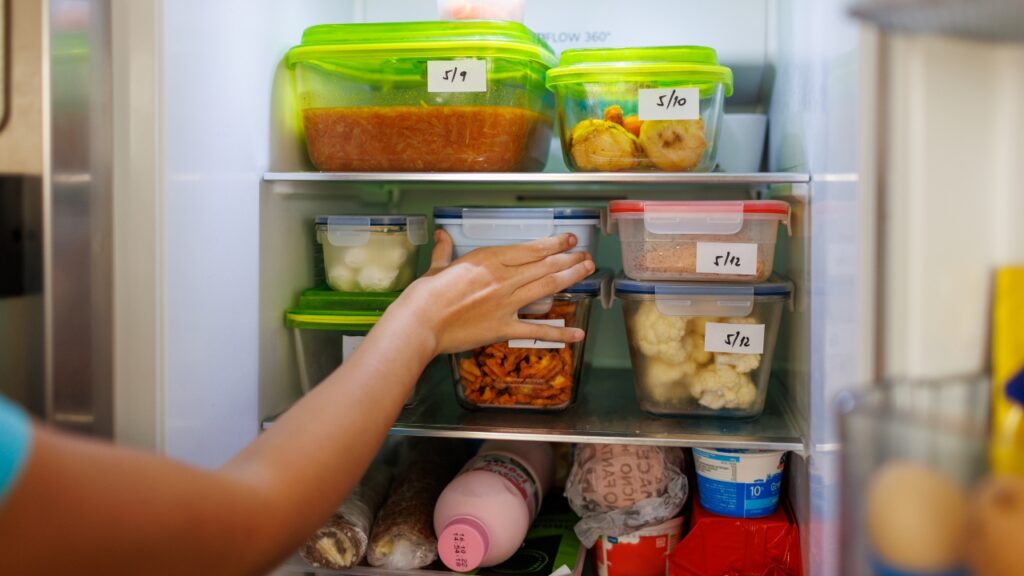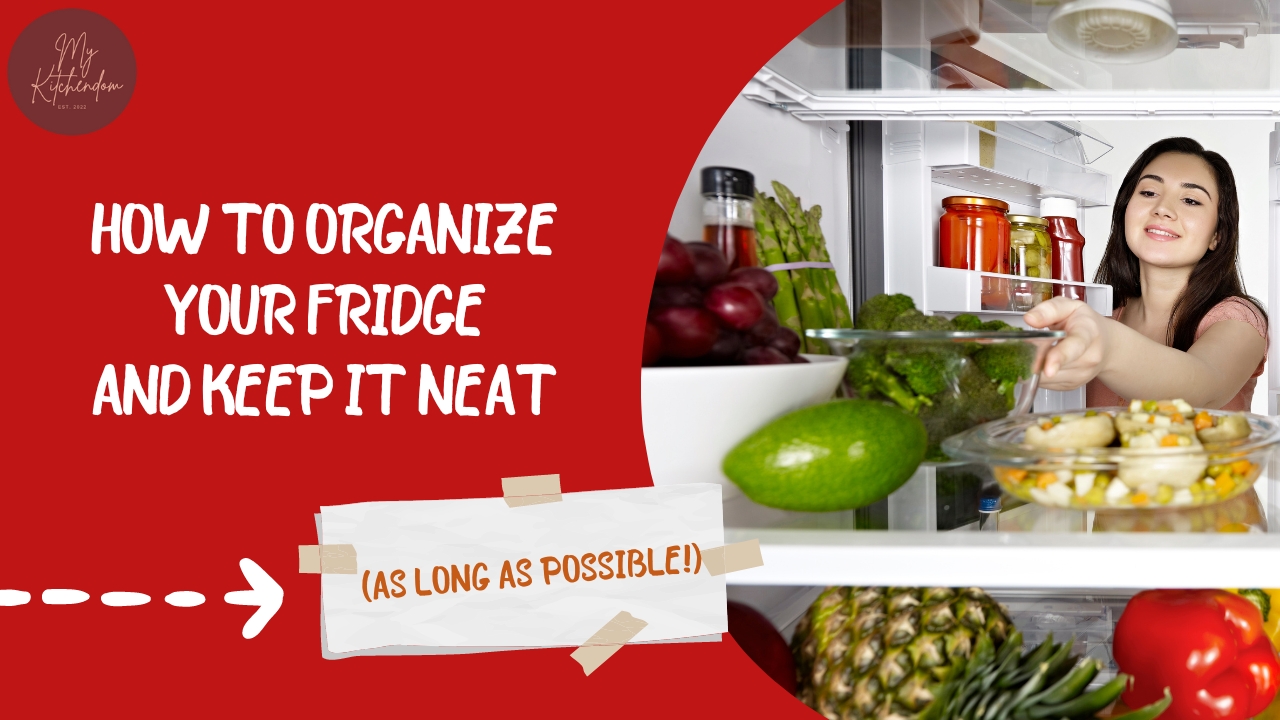Organizing your fridge is one thing, keeping it that way though can be quite challenging – especially when you’re sharing the house with people – particularly little ones called kids. We’ve all been there, I know! One second, we’re marveling at our beautifully organized fridge then the next thing you know, it’s all chaos! But worry not, here are some tips on not just how to organize your fridge but more importantly, how to keep it neat for as long as possible.
Because who doesn’t like a neatly organized fridge, right? Not only is it pleasing to the eyes but it also saves you food – like literally. An organized fridge also means you have better control and understanding of the food content you currently have in there which means you know exactly when and which to buy the next time you go grocery shopping.
But first let’s give your fridge a little MarieKondo-ing (I know mine, badly needs one, lol!). It’s kind of a necessary step if you ask me because, might as you try, if you have stuff in there that you don’t really need (anymore), then more likely that can set the tone for more clutter to come!
So, after you have emptied out your fridge and given your refrigerator a good scrubbing before you put everything back in (ideally, you won’t be putting ‘everything’ back in) – do some decluttering.
How To Declutter Your Fridge

- Check the expiration date. Check each pack and each bottle for the expiration dates. You’d be surprised at how more likely a number of the stuff you’ve been keeping for years are already pass way their expiration dates. If you can’t find one, (say the date is erased, peeled, or whatnot) then be on the safe side and just toss it out.
- Inspect the food items. Use your senses to give the food, especially left-over ones, a good old inspection. Use your eyes and nose, and if needed, have a taste, too! Make sure as well that they’re in good food containers – the right size, with cover, and ideally a clear one.
- Time for a ‘joy’ check. Basically, if an item is not sparking any joy for you (you don’t feel excited or joy in the thought of eating or using it) then it’s time to let it go. Sure, maybe initially it did spark joy but after months of being idle in the fridge, it’s perhaps time to accept that whatever the initial plan was, isn’t happening anymore. (I can totally relate, I kept a wasabi tube in my fridge for months – err, maybe almost a year, okay maybe longer than that – thinking I want to make sushi ‘one of these days’ but yep, it never happened.)
- Categorize the ones you’re keeping. Now that you have what ideally is what you need and want in your fridge, it’s time to categorize them. You can go for their usage (how often an item is used or needed on a daily basis), containers (say all bottled stuff together), or basically their purpose (condiments, snacks, desserts, etc.)
Now that you have decluttered the stuff you want to keep in your fridge, it’s time to put them back in. You can use fridge organizers if you want. I personally love those clear containers and the acrylic storage bins. I also find those label stickers very handy. If used properly, these kitchen organizers can really keep you organized.
Related Read: The Search for the Best Fridge Organizer: One Tub at a Time
After cleaning and decluttering your fridge, you would of course want to keep it neat for as long as possible. I know. When you’re sharing the house with other people (with kids especially), then it can get really tricky. Well, here are a few tips on how to organize your fridge and keep it neat, based on true-to-life experiences and real-life characters! Lol! See if these will help.
How To Organize Your Fridge and Keep It Neat

- Designate a particular leftover area. Assign a drawer or area in your fridge strictly for leftovers. This way, you or whoever in the house, would know where to look exactly and wouldn’t (hopefully) have the need to rummage the whole fridge as if they’re searching for the Yamashita treasure or something.
- If needed label it up. Up to you to gauge if your housemates need it, put a label sticker or a post-it note saying ‘left-overs’ in that particular drawer or shelf. It may seem a bit too much, but seriously it can help – either to keep reminding them where to put or look for leftovers or to persuade them into cooperating with your effort to keep your fridge organized. (Anyway, hopefully, you’ll only need it for just a short bit while until everybody in the house gets used to it.)
- Label, label, label. This additional extra step to organizing your fridge is so worth it. It applies to leftover foods or foods you have removed from their original container. Don’t rely on memory alone and trust that you’ll remember what each container has days or weeks after. This is especially helpful once containers start to pile up in the fridge. Encourage everybody in the family to make it a habit as well.

- Keep in mind, FIFO. Basically, from the FIFO method of keeping inventory which means ‘first in, first out.’ This can prove to be useful as well when keeping track of your fridge’s content to avoid spoilage. Say you buy a new packet of tofu, stack them underneath or behind the old ones that you still have in the fridge, that way, the old ones (first in) will be easily accessible and grabbed (first out) for use. Keep this in mind, too, when storing left-over foods – make sure that the older ones are easily accessible.
- Use clear containers as much as possible. Aside from labeling, using see-through containers with lids also helps in maintaining your fridge’s neatness after a thorough cleaning and decluttering. Go for kitchen organizers that can be easily stacked on top of each other. This will not only save you space but minimize spillage as well. By using clear containers, if the food it contains is easily recognizable, then you can also skip the labeling part.
- When storing leftovers, it’s best to transfer them to a new container (like the ones mentioned previously), that way, the content is clearly visible. It’s best to label it as well when the content is not too obvious (say it’s some kind of sauce or stews). And while you’re at it, why not add the dates, too. This will help with your FIFO inventory method and give you a pretty good idea of when something is absolutely good to go.

- If leftovers are not meant to be used anytime soon, it’s probably best to store them in the freezer instead (freezing will prolong their shelf life). You may use containers similar to the silicone reusable storage bag we mentioned here, to store them in smaller portions (by doing so, you’ll only need to defrost the exact amount needed instead of defrosting the whole batch).
- Do you really have to? Ask this every time you’re going to stuff something (especially leftovers) in the fridge – do you really have to, will you really go back and eat it again, will you really use it again, is it worth the precious space (I know! There’s never enough space!) and time to repack (because ideally, you’ll be storing it in a clear container, right?). If the joy or interest is waning as you ask these questions, then more likely than not – it doesn’t belong in your fridge.
- Prevention is better than cure. Okay, I did stretch that for a bit, but you know what I mean, right? Even before it comes to that point where your fridge is hardly recognizable (like seriously without a hint of how beautifully organized it was just a few weeks ago), start cleaning up. Don’t wait for leftovers to smell before you get rid of them – if it’s poorly kept (in loose containers, no lids, messy, and all that) chuck them out. Don’t let it become a breeding ground for molds and whatnot.
Nailing how to organize your fridge is just the start because learning how to keep it neat (which is equally important) proves to be even more challenging. For one, we all have that someone (I’m going out on a limb here) who simply loves cramming stuff in the fridge (I don’t get it and probably will never do), but hey what are you going to do, right? Those with a handful of catsup packets in the fridge can certainly relate!
These tips are intended to help you in keeping your fridge looking neat for longer. Let us know if it did work for you. I know that it can be on a case-to-case basis and honestly speaking it can be highly dependent on how cooperative your housemates are. So, here’s to hoping that at least one of the above tips will indeed work for you. Let us know!
Feel free to share some of your own tips as well.




